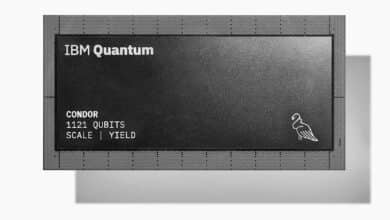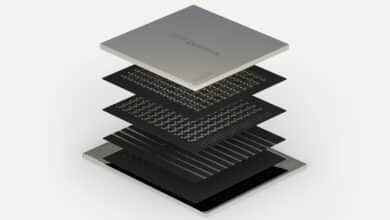IBM Uses AMD Chips for Quantum Error Correction

25 Oct 2025 – IBM has reached a crucial milestone on the road to fault-tolerant quantum computing – and it did so using off-the-shelf hardware. In late October, IBM revealed that a key quantum error-correction algorithm it developed can run in real time on standard AMD field-programmable gate arrays (FPGAs). This means IBM’s classical control system can keep up with qubit errors without needing exotic custom processors, marking significant progress in making quantum computers reliable and scalable.
The announcement, reported by Reuters on October 24, highlighted that IBM’s error-correcting code ran 10 times faster on the AMD chips than the minimum speed required for effective error mitigation. “Implementing it, and showing that the implementation is actually 10 times faster than what is needed, is a big deal,” said Jay Gambetta, IBM’s head of quantum research. In simpler terms, the classical side of IBM’s quantum stack has horsepower to spare when crunching the error correction algorithms – a reassuring fact for engineers.
The specific algorithm in question was first unveiled by IBM in June as part of its quantum roadmap. It is designed to detect and correct qubit errors on the fly, presumably using a technique like dynamical decoupling or a feedback-based syndrome extraction (the details are in a research paper slated for publication). What’s notable is IBM got this working a year ahead of schedule – Gambetta noted the demo was completed roughly 12 months sooner than planned. That suggests progress in quantum control systems is moving faster than even IBM’s aggressive timeline for its 2029 goal of a full fault-tolerant machine (codenamed “IBM Quantum Starling”).
By leveraging commodity AMD FPGAs, IBM also demonstrated cost-efficiency. “It works on a readily available chip that is not ridiculously expensive,” Gambetta emphasized. Prior to this, one concern was that quantum computers might require ultra-specialized (and costly) classical coprocessors to handle the error correction overhead. IBM’s result implies that today’s classical tech – with some clever programming – is up to the task, at least for current-generation quantum systems. This reduces one barrier to scaling: the control electronics can piggyback on the rapid improvements in the semiconductor industry, rather than lagging behind.
In practice, IBM’s achievement means that as its 127-qubit, 433-qubit, and larger chips do computations, an FPGA-based controller can monitor their qubits, apply error-correcting pulses, and adjust on the microsecond timescale necessary to outpace decoherence. Running 10× faster than required gives a nice buffer for increased complexity as qubit counts grow. It’s a bit like having a car that can go 200 mph when the speed limit is 20 mph – plenty of headroom.
The stock market appeared to recognize the significance: IBM’s shares jumped nearly 8% the day of the news, and interestingly AMD’s stock also popped by a similar percentage. That reflects excitement that quantum computing’s hurdles (like error correction) are being overcome with mainstream tech, potentially opening new markets for chipmakers like AMD in quantum control.
There is of course a lot more to do – full error correction (as opposed to mitigation) will require big logical qubit overheads and likely even more sophisticated algorithms – but IBM’s demonstration is a tangible step toward that goal. It shows that the “quantum-classical divide” is narrowing: the classical side can meet the quantum side in the middle. As Microsoft and Google also push on error correction (Google just announced a breakthrough error mitigation technique around the same time), the race to achieve practical fault tolerance is clearly heating up. IBM’s bet on an FPGA-based approach seems to be paying off, bringing the vision of a stable, reliable quantum computer closer to reality.
Quantum Upside & Quantum Risk - Handled
My company - Applied Quantum - helps governments, enterprises, and investors prepare for both the upside and the risk of quantum technologies. We deliver concise board and investor briefings; demystify quantum computing, sensing, and communications; craft national and corporate strategies to capture advantage; and turn plans into delivery. We help you mitigate the cquantum risk by executing crypto‑inventory, crypto‑agility implementation, PQC migration, and broader defenses against the quantum threat. We run vendor due diligence, proof‑of‑value pilots, standards and policy alignment, workforce training, and procurement support, then oversee implementation across your organization. Contact me if you want help.



